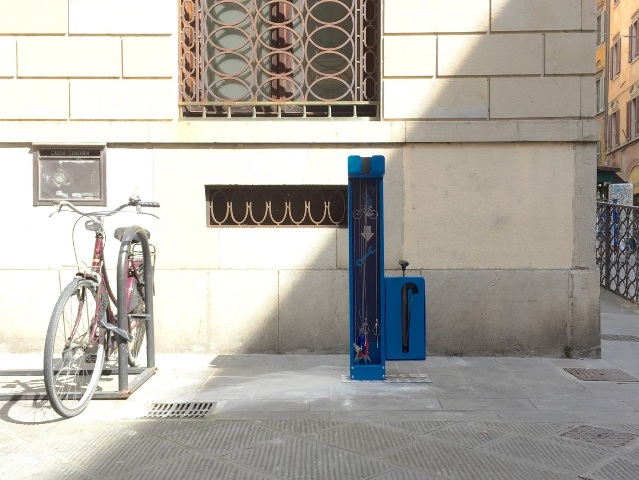The building, summa of the Renaissance studies on the centralized Greek cross plan applied to Catholic buildings of worship, was built by Antonio da Sangallo the Elder, who had as an immediate model the basilica of Santa Maria delle Carceri in Prato, designed a generation earlier in Prato by his brother Giuliano da Sangallo. The same plan, derived from some works by Filippo Brunelleschi, was applied to the original project by Bramante and Michelangelo Buonarroti for the basilica of San Pietro or the church of Santa Maria della Consolazione in Todi, of uncertain paternity. [3] The Renaissance building was built on the site of an ancient early Christian parish church dedicated to Santa Maria and subsequently, after the transfer of pleban rights, around the year 1000, within the castle walls, to San Biagio. At the beginning of the sixteenth century only some remains of the parish were preserved; in one wall there was still a fresco with the Madonna with child and St. Francis, a work of the Sienese fourteenth century, to which miraculous events were attributed in 1518. [4] The echo of this devotion develops far beyond the Valdichiana area: in 1519, for example, the municipality of Sansepolcro, in the Upper Tiber Valley, decided to participate in the costs of pilgrimages that the companies and people of the city will support for go on pilgrimage to Our Lady of San Biagio, to which many communities have already sent gifts [5]. The Poliziano people decided to build a new church entrusting the task to Antonio da Sangallo the Elder. He designed an imposing building with a central plan and the ambitious project was supported by Pope Leo X, who had been educated by Agnolo Poliziano, a native of the Tuscan town. The construction of the temple lasted until 1545 and the works were directed, after the death of the designer, by other superintendents. The body that built the church was the Opera di San Biagio, today merged into the factory of the Joint Ecclesiastical Works of Montepulciano.
